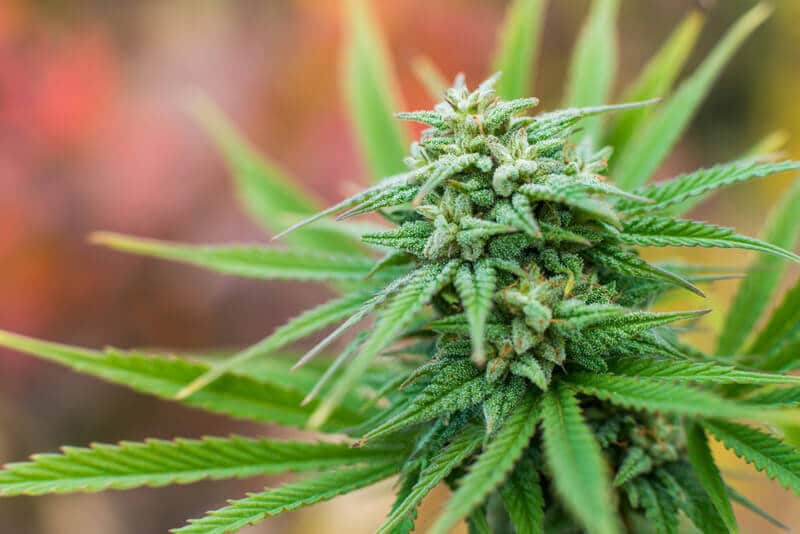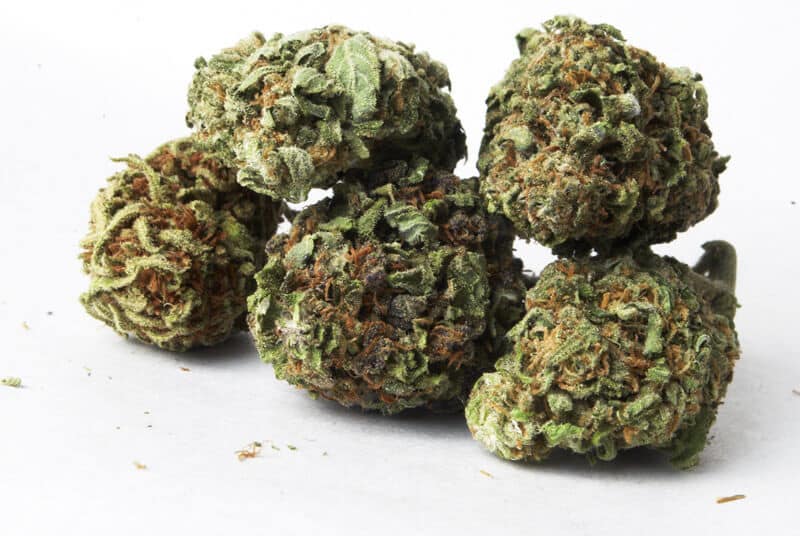What is Marijuana?
Marijuana is a commonly used name for Cannabis. Cannabis is the preparation of the Cannabis plant that is intended to be used as medicine or a psychoactive drug. The primary compound of cannabis that gives it its psychoactive properties is tetrahydrocannabinol, or THC. Marijuana is generally used by vaporization, within edible products, smoking, or as a more potent extract. Marijuana is the most commonly used illegal drug in both the United States and the world. Marijuana edibles are becoming more popular and can be very dangerous.
Check laws for the legality of marijuana drug testing. Review our comprehensive pages on marijuana in the workplace.

Marijuana can be consumed in a variety of ways. When vaporizing, the vaporizer heats the cannabis to the point where the active ingredients evaporate into a vapor form, which is then inhaled by the user, without actually burning the plant material. Smoking Marijuana generally involves burning and inhaling smoke produced by the vaporized cannabinoids using devices, or paraphernalia, such as tobacco blunts, paper joints, pipes, and water bongs. Edibles and teas can be prepared using cannabis as an ingredient. Edibles can be created with just about any food if prepared properly, but common edibles include baked goods such as cookies and brownies, candy, gummies, butter, and more.
Uses of Marijuana
Marijuana can be used medicinally, or for spiritual or religious reasons. It is mostly used recreationally, but it is becoming more prevalent in the medical field as an asset in a wide variety of medical treatments. Cannabis is commonly used recreationally because of its physiological and psychoactive effects when it is consumed. Those desired effects usually consist of a change in perception, an increase in appetite, a heightened mood, and a “stoned” or “high” feeling.
Medical Marijuana is used to treat chronic pain, to help people with HIV/AIDS improve their appetite, to help with muscle spasms, and to reduce vomiting and nausea as a result of chemotherapy. There are still not sufficient conclusions about the safety and effectiveness of using Cannabis for other medical applications. While short-term use does not appear to increase any major adverse effects, it does increase the minor adverse effects. There are no solid conclusions about the long-term effects of Cannabis, but there are concerns of risks such as addiction, the risk of children consuming it by mistake, the risk of schizophrenia among young people, and cognition and memory problems.
The medicinal value of Marijuana is largely disputed since research so far has been inconclusive when it comes to the long term effects. The US FDA (Food and Drug Administration) states that major aspects of Cannabis, such as production, content and supply, are not regulated, and that it contributes to many harmful health effects. However, the FDA does approve the prescriptions of two products that have a small, controlled dose of pure THC as the active substance, and which is not for smoking. The American Society of Addiction Medicine dismisses the medical use of Marijuana due to health concerns and risk of addiction.
Cannabis has been used as an entheogen in several religions for centuries, and has held a sacred status in many. It has been a chemical substance used in spiritual, religious, or shamanic context in Nepal and India dating back to 1500 BCE, possibly even as far back as 2000 BCE. It has also been referenced in Greek mythology as far back as the 5th to 2nd century BCE. In more modern days, it has been the major part of the Rastafari movement, which promoted the use of Marijuana as an aid to meditation and as a sacrament.
Effects of Marijuana
The immediate desired effects of consuming Marijuana include the “stoned” or “high” feeling, which is described as a feeling of relaxation and euphoria, an increased awareness of sensations, distortions in the perception of space and time, an increased libido, and a general alteration of conscious perception. In higher doses, there are reports of pseudo hallucinations and ataxia, visual and auditory illusions, and altered body image that is contributed to an impairment of polysynaptic reflexes. There have even been extreme cases of Marijuana consumption resulting in dissociative states like derealization and depersonalization. Onset of the effects happens almost instantly or within minutes when it is smoked or vaporized, and usually takes about 30 to 90 minutes to kick in when it is consumed as an edible. The effects can last anywhere from one to eight hours, depending on the potency, method of consumption, and the person’s metabolism.
Long term effects of Marijuana consumption can include behavioral problems in children whose mothers consumed Marijuana while they were pregnant, a decrease of mental ability in users who started in their teens or at a young age, and possibly even addiction. However, studies of those long term side effects are not entirely conclusive, and they are still disputed.
Symptoms of Marijuana
Some immediate and short term symptoms of Marijuana consumption can include red or bloodshot eyes, dry mouth, feelings of anxiety or paranoia, decreased short term memory, and impaired motor skills. Besides subjective changes in mood and perception, the most common short term neurological and physical effects include increased appetite and consumption of food, lowered blood pressure, increased heart rate, impairment of concentration, impairment of psychomotor coordination, and impairment of working and short term memory.
In some more rare cases, users have reported experiencing episodes of acute psychosis. Symptoms of acute psychosis usually subside after a few hours, but in some rare instances the symptoms could potentially last for days.

Testing for Marijuana – How Long Does Marijuana stay in your System?
The most common testing methods for Marijuana, or cannabinoids, are urine, hair, and saliva specimen drug tests. Blood sample and Neurological testing exists as well, but they are not commonly used. Marijuana is generally included in just about every standard drug test panel. For infrequent users, the detection time for marijuana in the urine specimen can be from 2 to 5 days after consumption. For heavy users, marijuana can be detected in the urine 1 to 15 days after consumption, and for users with high body fat and/or chronic cannabis users, marijuana can be detected in the urine from 1 to 30 days after consumption. Drug testing detects marijuana by finding the THC metabolite in the specimen. Concentrations of THC above a standard level provides for a positive marijuana drug test..
Hair follicle testing for Marijuana uses the first 1.5 inches from the base of the head as the specimen, not actually the hair follicle. Hair drug tests measure the metabolite produced from marijuana that is imbedded in the hair shaft from the bloodstream. The detection period for hair follicle testing is about 90 days. If there is no hair or the hair is not long enough on the head, then a sample of body hair will be taken instead. There is some debate about whether or not body hair provides a longer detection period since body hair usually grows much slower than head hair.
Both saliva and blood testing detects the existence of the parent drug, and not their inactive metabolites. Saliva drug tests detect the presence of drugs for up to 12 to 72 hours after consumption, depending on whether the test was given in a lab or instantly onsite. Blood tests detect the presence of drugs for about 12 to 24 hours after consumption, with frequent or heavy use being detectable for up to a week. Blood tests are used more infrequently though since they are difficult to administer, expensive and much more invasive.
Warning Signs
The warning signs of Marijuana use can include redness of eyes, dry mouth, appearing confused, slow or lethargic, a lack of motivation, impaired motor skills, impaired short term memory, paranoia or anxiety, and other changes in behavior. These effects would be harmful to safety and productivity in a workplace setting. Some more obvious warning signs might include eye drops, air fresheners, drug paraphernalia, and actions like disappearing and coming back having sprayed perfume and used mouth wash and eye drops.






